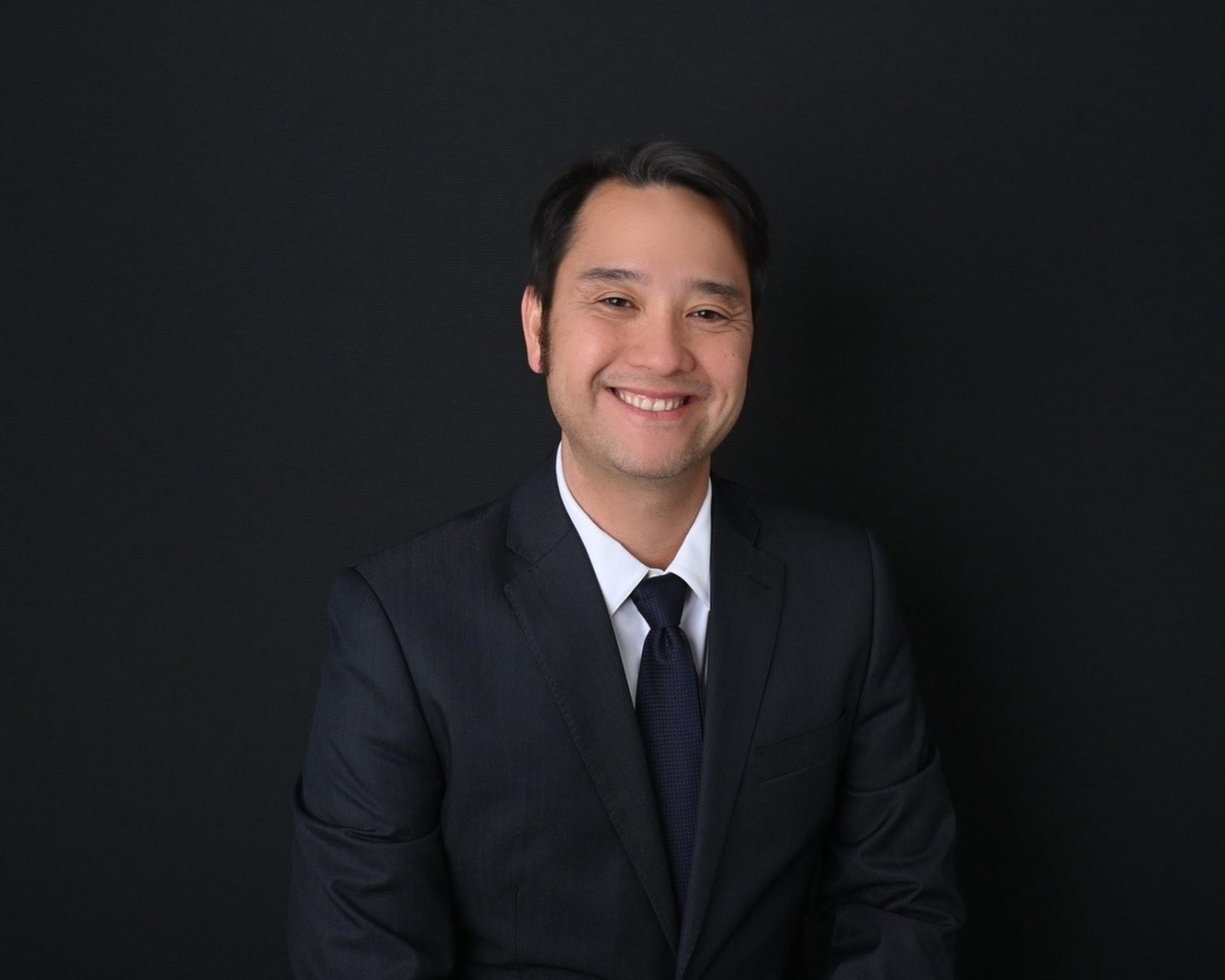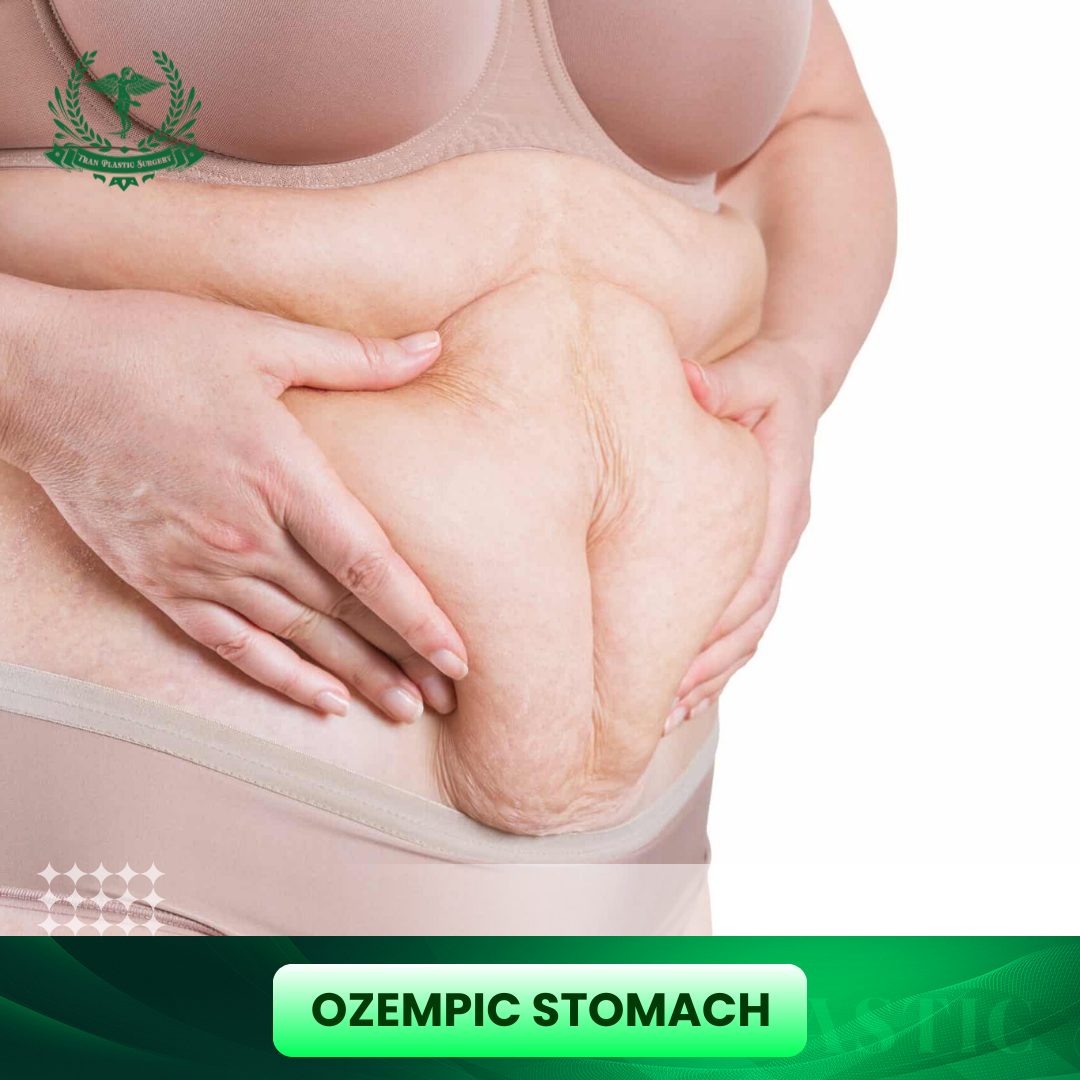Considering an abdominoplasty, also known as a tummy tuck, can be a life-changing step towards achieving the flat, firm, and beautifully contoured abdomen you desire. Prepare to discover how a tummy tuck can dramatically reshape your midsection, enhance your confidence, and reveal a more harmonious silhouette with Tran Plastic Surgery expert.
Table of Contents
ToggleWhat is a Tummy Tuck?
A tummy tuck, medically known as abdominoplasty, is a sophisticated cosmetic surgical procedure designed to reshape and firm the abdominal area. This highly sought-after operation primarily involves the precise removal of excess skin and stubborn fat deposits from the middle and lower abdomen. Beyond simply trimming unwanted tissue, a key component of a tummy tuck is the restoration of weakened or separated abdominal muscles, often a result of pregnancy or significant weight loss. By tightening these underlying muscles, the procedure creates a flatter, more toned, and aesthetically pleasing abdominal contour that can dramatically improve your overall body proportion.
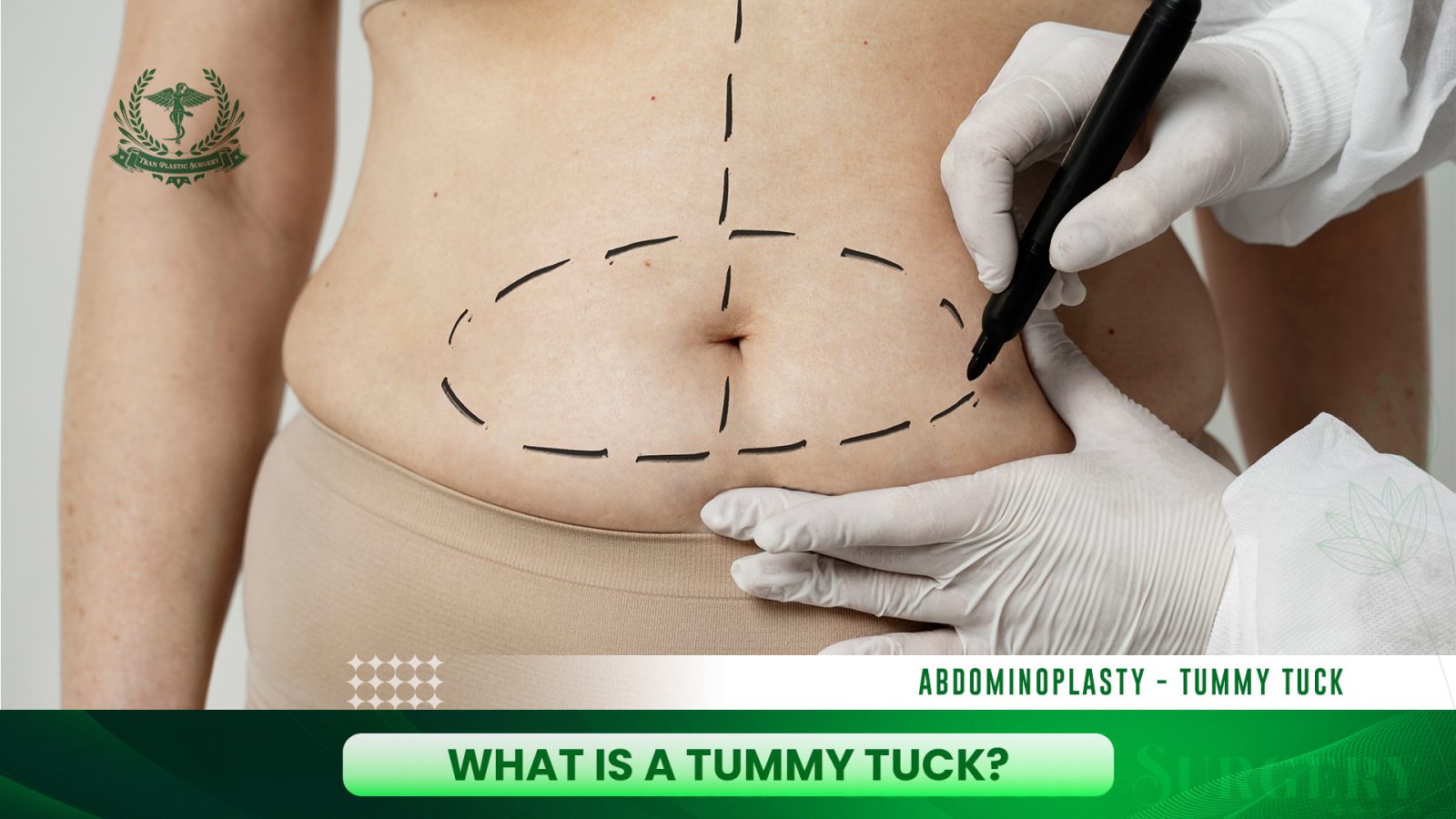
Who is Recommended for a Tummy Tuck?
A tummy tuck is a highly personalized procedure, and the ideal candidates are individuals who are seeking to refine their abdominal appearance after significant life changes. While it’s not a weight-loss solution, it’s incredibly effective for those who have achieved a stable weight but are still bothered by excess skin, fat, or muscle laxity in their midsection.
Here are the primary groups who typically benefit most from abdominoplasty:
- Postpartum Women: Pregnancy can lead to stretched abdominal skin, stubborn fat deposits, and, most commonly, diastasis recti (separation of the abdominal muscles). A tummy tuck can effectively address these concerns, helping mothers regain their pre-pregnancy physique and core strength.
- Patients Who Have Lost a Lot of Weight: After significant weight loss, whether through diet, exercise, or bariatric surgery, many individuals are left with loose, sagging skin that hangs from the abdomen. This excess skin can cause discomfort, hygiene issues, and self-consciousness. A tummy tuck removes this redundant skin, creating a smoother, more streamlined contour.
- People with Loose Skin/Muscles Due to Aging or Genetics: Even without major weight fluctuations or pregnancies, some individuals develop loose abdominal skin and weakened muscles over time due to natural aging or genetic predisposition. A tummy tuck can address these signs of aging, restoring a more youthful and firm appearance to the abdomen.
Things to consider for ideal candidates: Ideal candidates should be at a stable weight, in good overall health, and possess realistic expectations for the outcome. It is also crucial for patients to be non-smokers, as smoking can significantly impact healing and increase complication risks.
Types of Abdominoplasty
The world of abdominoplasty offers several tailored approaches, each designed to address specific patient needs and anatomical considerations. A thorough consultation with a board-certified plastic surgeon will determine the most suitable technique for you.
1. Full Tummy Tuck (Traditional Abdominoplasty)
The full abdominoplasty, or traditional tummy tuck, is the most comprehensive option. It addresses significant excess skin and fat, along with pronounced muscle separation, across both the upper and lower abdomen.
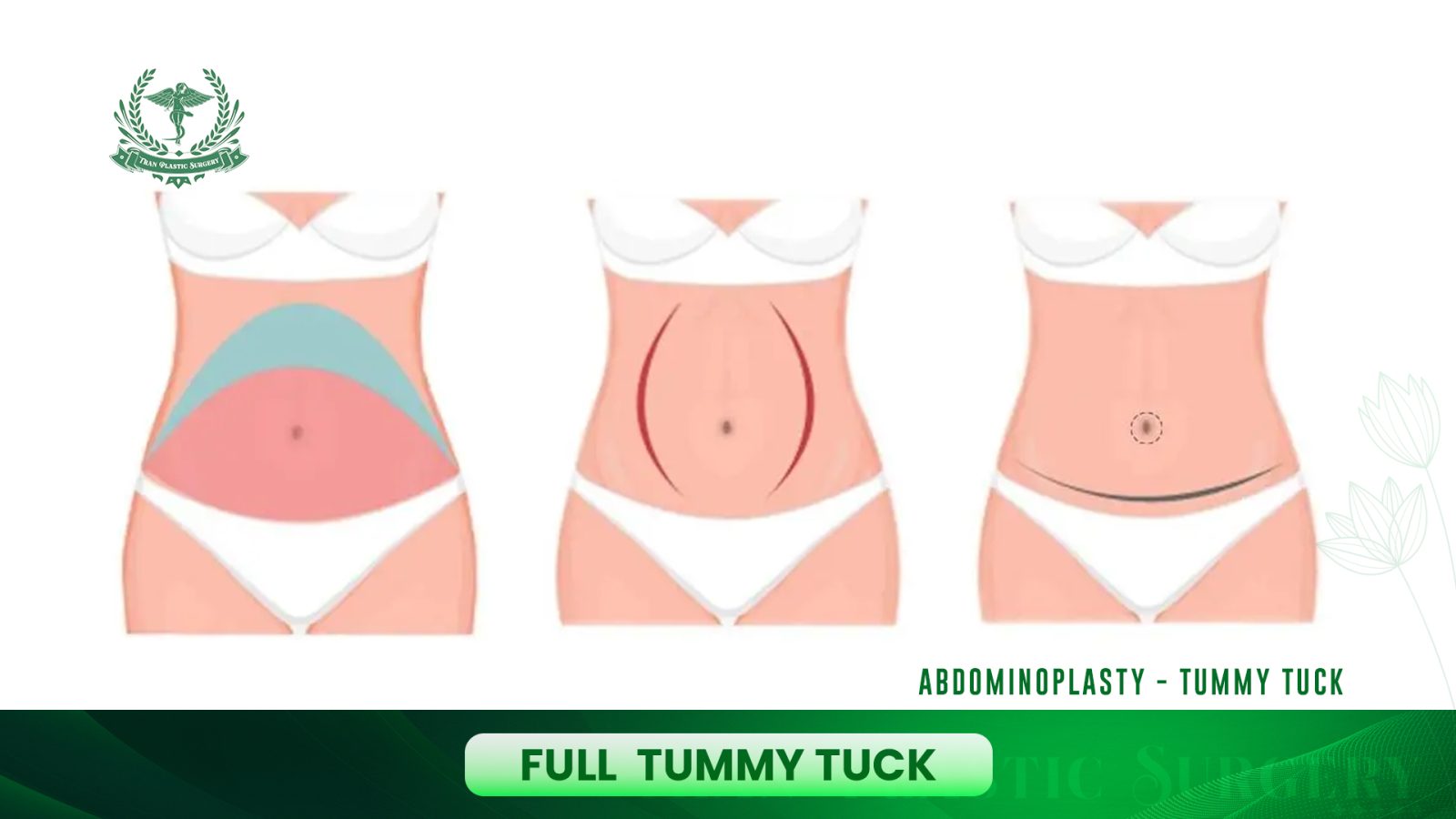
This procedure involves a horizontal incision low on the abdomen, from hip to hip, and often a second incision around the navel. The skin and fat are lifted, allowing for extensive tightening of the underlying abdominal muscles. Excess tissue is removed, and the remaining skin is redraped for a smooth, taut contour, with the belly button repositioned naturally.
This technique is best for individuals with considerable skin laxity and muscle separation, commonly seen after multiple pregnancies or substantial weight loss. The primary incision is designed to be easily concealed.
2. Mini Tummy Tuck (Partial Abdominoplasty)
The mini tummy tuck is a less extensive option, focusing primarily on the area below the belly button. It’s ideal for those with minimal excess skin and fat in the lower abdomen and less severe muscle laxity.
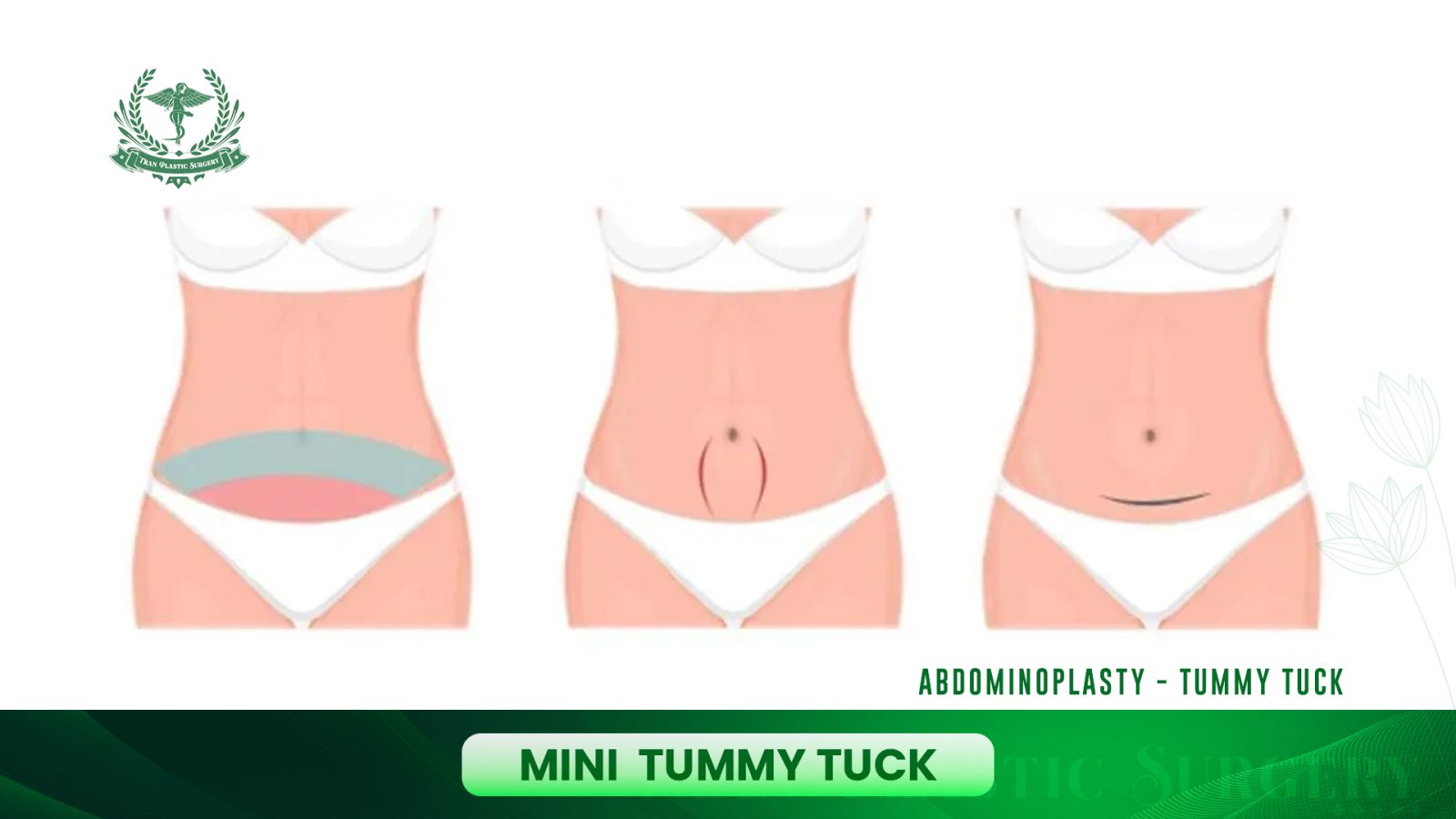
This procedure typically involves a shorter horizontal incision, often above the pubic hairline. Unlike a full tummy tuck, it usually does not require an incision around the belly button, and muscle repair is limited to the lower abdominal area.
A mini tummy tuck can effectively flatten a “belly pooch” and remove minor skin laxity, offering a quicker recovery and a less noticeable scar compared to a full abdominoplasty.
3. Extended Tummy Tuck & Circumferential Abdominoplasty
The extended tummy tuck is designed for patients with significant excess skin and fat that extends beyond the abdomen to the flanks (love handles) and sometimes the lower back. This is particularly common after massive weight loss.
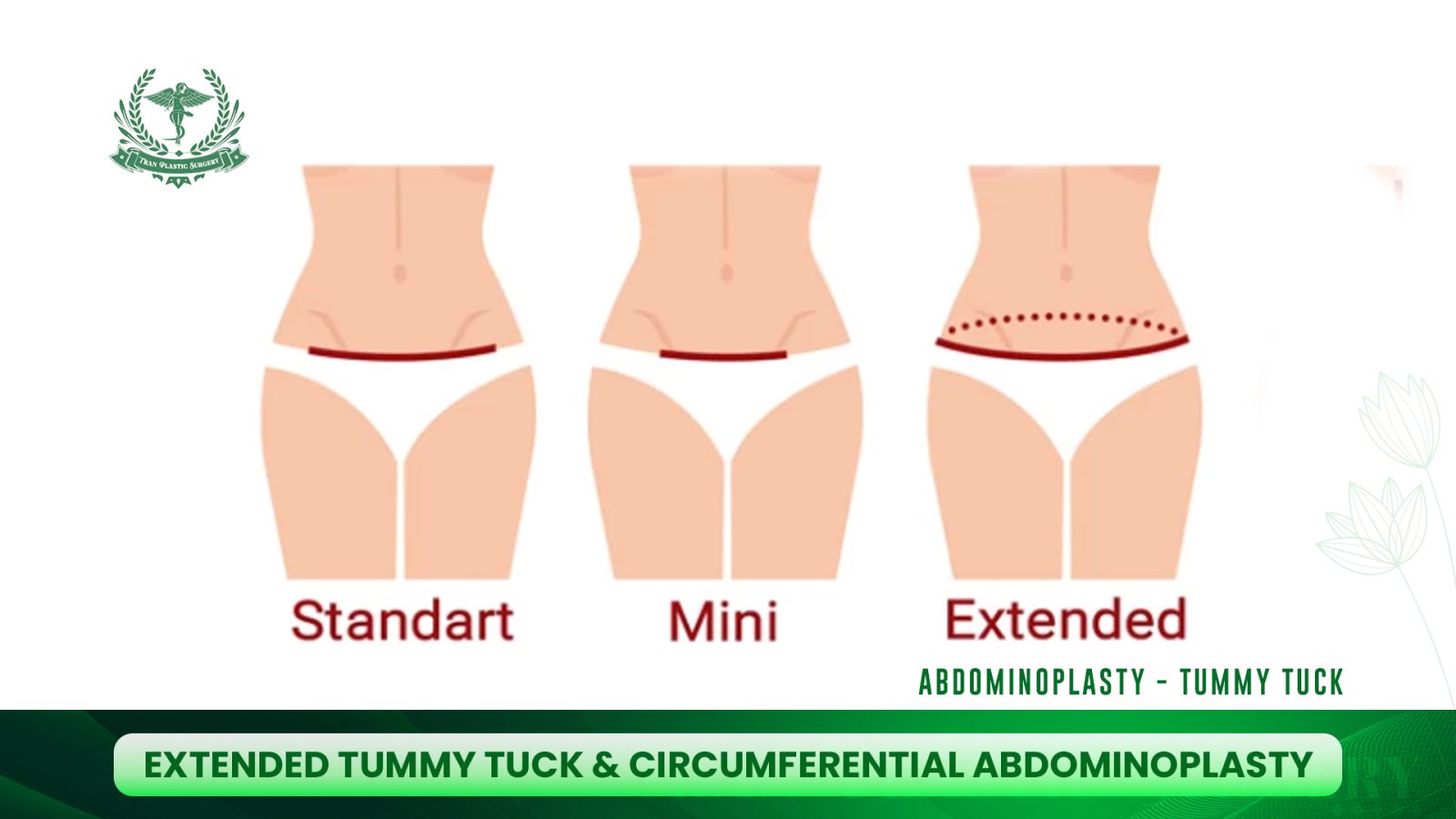
This procedure involves a longer horizontal incision that wraps around the sides of the body, allowing for more extensive skin removal and contouring of the entire midsection. It also includes muscle tightening of the abdominal wall.
A circumferential abdominoplasty, or lower body lift, is an even more extensive version that extends the incision completely around the body, addressing excess skin on the abdomen, flanks, lower back, and sometimes the buttocks and outer thighs. This provides a comprehensive body contouring solution.
4. Fleur-de-Lis Tummy Tuck
The Fleur-de-Lis tummy tuck is a specialized technique reserved for individuals with extreme amounts of loose skin, both horizontally and vertically, often after massive weight loss.
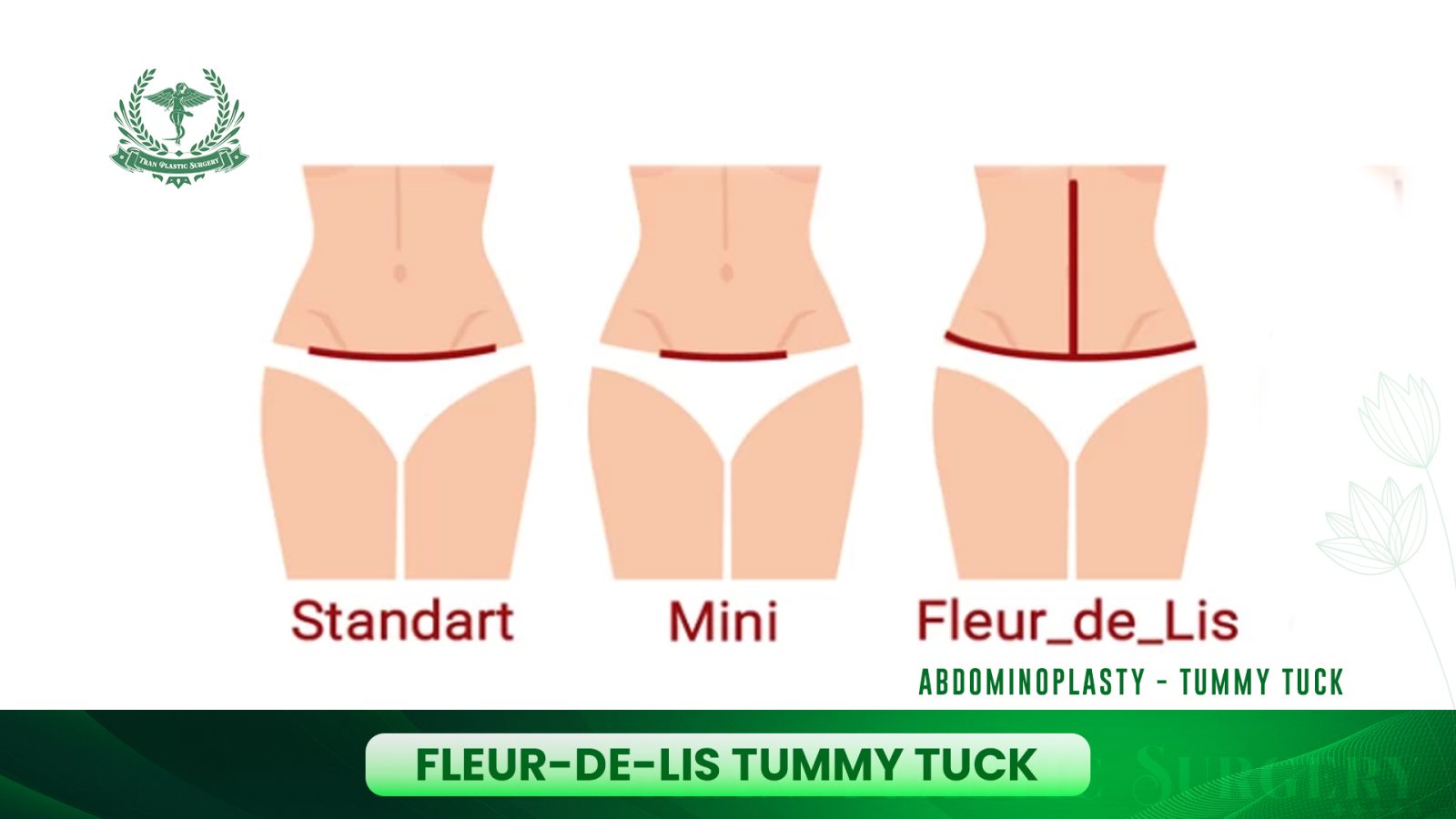
This procedure involves both a horizontal incision (similar to a traditional tummy tuck) and a vertical incision running up the center of the abdomen, creating a “T” or inverted “T” shape. This unique incision pattern allows for maximum skin removal and tightening in all directions.
While it results in a more visible vertical scar, the Fleur-de-Lis technique offers unparalleled contouring for patients with significant central abdominal skin excess that cannot be fully addressed with other methods.
5. Abdominoplasty without Drains
A drainless tummy tuck is an innovative approach that aims to minimize patient discomfort during recovery by eliminating the need for post-operative surgical drains.
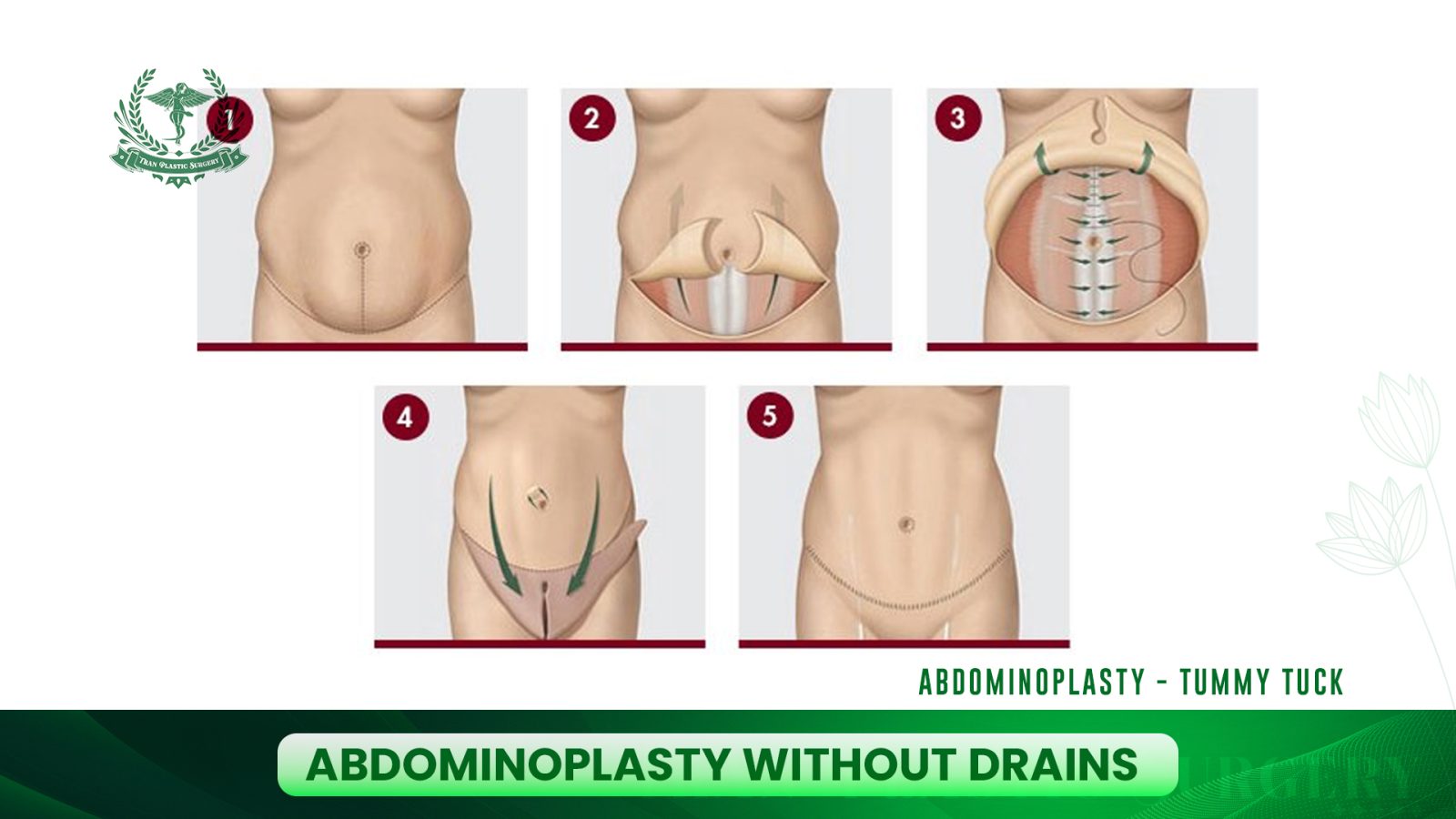
This technique utilizes advanced suturing methods to meticulously close the space between the skin flap and the underlying muscle wall, reducing the potential for fluid accumulation (seroma). By creating a more secure internal closure, the body’s natural healing processes can manage any minimal fluid, often negating the need for drains.
The benefits include a more comfortable recovery, easier mobility, and a potentially reduced risk of infection associated with drain sites. This method can lead to a smoother and more convenient post-operative experience.
Ready to achieve a flatter, firmer midsection tailored to your body goals? At Tran Plastic Surgery, our expert Tummy Tuck service combines advanced surgical techniques with personalized care to deliver natural-looking, lasting results. Schedule your consultation today and take the first step toward the confident silhouette you deserve.
How much does a tummy tuck cost?
The cost of a tummy tuck is a significant consideration for many patients, and it’s important to understand that the total price can vary widely. While the national average for a surgeon’s fee might be around $8,000, this figure often doesn’t include all associated expenses. The final investment will depend on several factors, reflecting the personalized nature of this transformative procedure.
Factors that influence the cost of a tummy tuck:
- Surgeon Fees (Experience, Location): Highly experienced, board-certified plastic surgeons often command higher fees due to their expertise, reputation, and proven track record of successful outcomes. Geographic location also plays a role, with practices in major metropolitan areas typically having higher overheads and, consequently, higher fees.
- Anesthesia Fees: The cost of anesthesia depends on the type of anesthesia used (e.g., general anesthesia), the duration of the surgery, and the credentials of the anesthesiologist. This is a crucial component for your comfort and safety during the procedure.
- Operating Room Fees: These fees cover the use of the surgical facility, its equipment, and the support staff. The type of facility (e.g., hospital vs. accredited outpatient surgical center) can influence this cost.
- Pre- and Post-operative Tests/Clothing/Medications: This category includes necessary medical tests before surgery to ensure you’re a suitable candidate, post-operative compression garments essential for healing and swelling reduction, and prescribed medications for pain management and infection prevention.
- Type of Abdominoplasty: As discussed, different tummy tuck techniques (mini, full, extended, Fleur-de-Lis) vary in complexity and surgical time, directly impacting the overall cost. More extensive procedures generally incur higher fees.
- Geographic Location: Beyond the surgeon’s fees, the general cost of living and demand for cosmetic surgery in a particular region or city will influence all aspects of the procedure’s pricing.
How long is the recovery period after a tummy tuck?
Lorem ipsum dolor sit amet, consectetur adipiscing elit. Ut elit tellus, luctus nec ullamcorper mattis, pulvinar dapibus leo.
1. Tummy Tuck Recovery Timeline (Week by Week)
- Week 1: Focus on rest. Expect significant swelling, bruising, and discomfort. Take prescribed pain medication and care for drains as instructed. Limit movement to short, gentle walks; sleep reclined to reduce abdominal tension. Avoid strenuous activity, heavy lifting, or bending.
- Weeks 2-4: Discomfort lessens, and you’ll start feeling more like yourself. Drains are typically removed early in this period. Swelling decreases, though some tightness and minor bruising may persist. Gradually increase activity, resuming light daily tasks or a desk job with your surgeon’s approval. Continue avoiding strenuous exercise and heavy lifting.
- Weeks 4-6: Significant improvements in comfort and mobility are common. Most patients can stand upright without pulling. Gradually reintroduce light exercises (e.g., longer walks), but avoid high-impact activities, abdominal exercises, and heavy lifting. Swelling continues to diminish, and incision lines mature.
- Months 2-6: Residual swelling resolves, and scars fade and flatten. You can gradually return to more strenuous physical activities, including most forms of exercise, with your surgeon’s approval. Your new abdominal contour becomes more apparent.
- 6 months or more: Most patients achieve final results, with swelling fully resolved and scars continuing to mature and lighten. Maintaining a healthy lifestyle and stable weight is key to preserving these long-term outcomes.
2. Tips for a smooth recovery
- Follow your surgeon’s instructions: Adhering meticulously to all post-operative care guidelines is paramount for optimal healing and minimizing complications.
- Take pain medication: Manage discomfort effectively with prescribed medications, transitioning to over-the-counter options as pain lessens.
- Hydrate: Drink plenty of water to support your body’s healing processes and help reduce swelling.
- Eat well: A nutritious diet rich in protein, vitamins, and minerals will provide the necessary fuel for recovery.
- Avoid strenuous activity: Resist the urge to overexert yourself, especially in the early weeks, to prevent strain on your incisions and promote proper healing.
- Massage your scar: Once cleared by your surgeon, gentle scar massage can help improve scar appearance and flexibility.
Tummy Tuck Before and After
The transformative power of a tummy tuck is truly remarkable, offering patients a flatter, firmer, and more sculpted abdominal profile. While the final results emerge gradually as swelling subsides, the initial changes are often visible immediately, providing a significant boost in confidence.
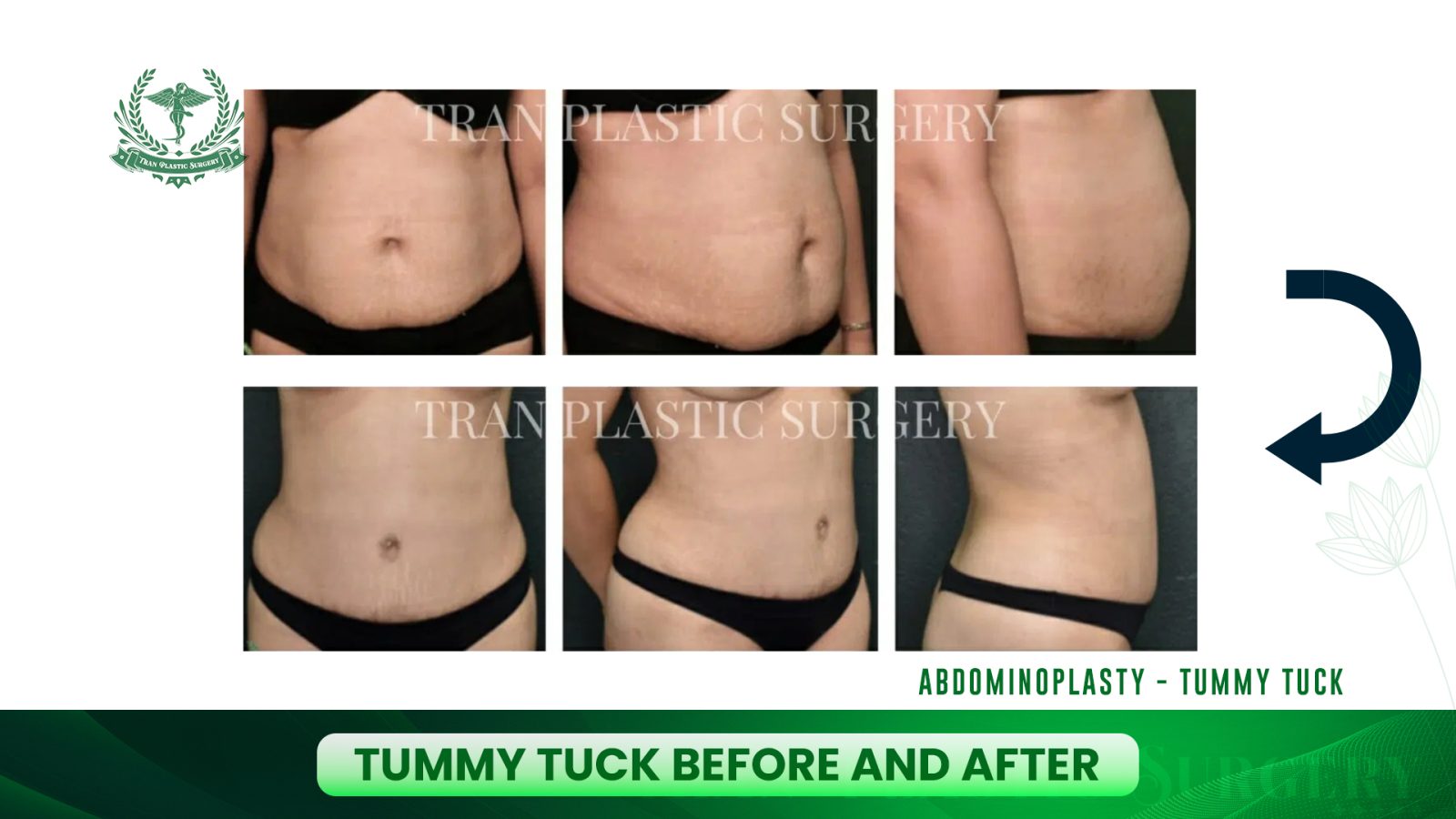
What results can you expect? After a tummy tuck, you can expect a dramatically improved abdominal contour. This includes the removal of excess, sagging skin and stubborn fat deposits that were resistant to diet and exercise. Crucially, the procedure also tightens weakened abdominal muscles, which contributes to a firmer feel and a more defined waistline. Many patients also experience a reduction in the appearance of stretch marks, particularly those located on the skin that is removed below the belly button. The overall outcome is a more aesthetically pleasing and proportionate midsection.
Before and After Photo Gallery
Witness the incredible transformations firsthand! We invite you to explore our Before and After Photo Gallery to see real patient results from abdominoplasty procedures performed by Tran Plastic Surgery expert. These images offer a realistic glimpse into the potential outcomes and can help you visualize your own journey.
Common Abdominoplasty Concerns
While a tummy tuck offers significant aesthetic and functional improvements, patients often seek this procedure to directly address specific concerns that diet and exercise alone cannot resolve. Understanding these common issues highlights why abdominoplasty is such a vital solution for many.
- Lax, Sagging Skin (Abdominal Pannus): This is perhaps the most common concern. After significant weight loss or multiple pregnancies, the skin of the abdomen can lose its elasticity and hang loosely, sometimes creating an “apron” of skin (pannus) that can cause chafing, rashes, and difficulty with clothing. A tummy tuck excels at removing this excess skin, creating a smooth, taut appearance.
- Abdominal Separation (Diastasis Recti): Often a result of pregnancy, the rectus abdominis muscles (the “six-pack” muscles) can separate and weaken, leading to a persistent bulge in the abdomen, even in otherwise fit individuals. This condition, known as diastasis recti, can also contribute to lower back pain and poor posture. A key component of most tummy tucks is the surgical repair of these separated muscles, restoring core strength and a flatter profile.
- Stubborn Fat Pockets: While not a weight-loss surgery, a tummy tuck effectively removes localized pockets of fat that activate in the abdominal area and are resistant to diet and exercise. This fat removal, often combined with liposuction, further refines the contour and creates a more streamlined silhouette.
Stretch Marks (especially below the belly button): While a tummy tuck cannot eliminate all stretch marks, it is highly effective at removing those located on the excess skin that is excised, particularly in the lower abdomen below the belly button. This can significantly improve the overall texture and appearance of the abdominal skin.
Choosing the Right Plastic Surgeon for Abdominoplasty
Selecting the right plastic surgeon for your abdominoplasty is arguably the most critical decision in your journey. Your surgeon’s expertise, experience, and artistic vision will directly impact the safety of your procedure and the quality of your results. This choice should be made with careful consideration and thorough research.
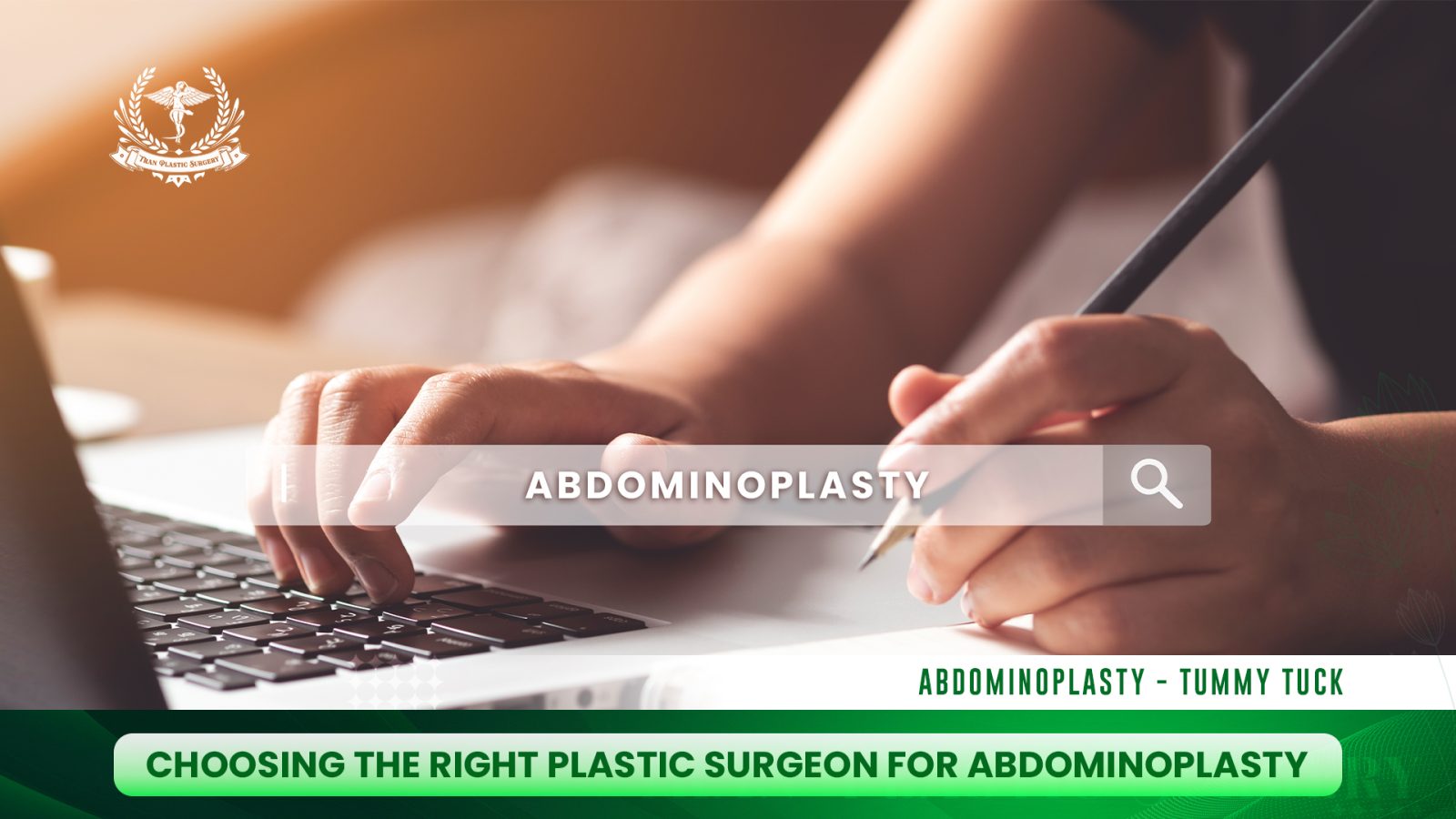
Key Considerations:
- Board Certification: Always ensure your surgeon is board-certified by the American Board of Plastic Surgery (or an equivalent national board). This signifies they have met rigorous standards of training, experience, and ethical practice in plastic surgery.
- Experience (especially with abdominoplasty): Look for a surgeon with extensive experience specifically in performing tummy tucks. Ask about their caseload and how many abdominoplasty procedures they perform annually. A surgeon who specializes in body contouring will have a deeper understanding of the nuances involved.
- Patient Reviews: Read testimonials and reviews from previous patients. This can offer valuable insights into the surgeon’s communication style, patient care, and satisfaction with results. Online platforms and the surgeon’s website are good places to start.
- Before and After Photos: A comprehensive gallery of before and after photos is essential. Pay attention to the consistency of their results across various body types and the naturalness of the outcomes. Look for results that align with your own aesthetic goals.
- Communication Style: During your consultation, assess how well the surgeon listens to your concerns, explains the procedure, and answers your questions. A good surgeon will be transparent, honest, and ensure you feel comfortable and fully informed.
Ready for a change? Let Tran Plastic Surgery guide you through a safe, tailored abdominoplasty experience. Call us today.
Conclusion
Abdominoplasty is a powerful and transformative procedure that can significantly enhance your body contour and boost your self-confidence. By addressing concerns like excess skin, stubborn fat, and weakened abdominal muscles, a tummy tuck offers a lasting solution for a flatter, firmer, and more aesthetically pleasing midsection. While the journey involves careful consideration of costs, recovery, and realistic expectations, the results can be life-changing for the right candidate.
Ready to explore your options and embark on your transformation? Don’t wait to achieve the silhouette you’ve always dreamed of. Contact Tran Plastic Surgery expert today to schedule your confidential consultation. Our highly experienced and board-certified plastic surgeons are dedicated to providing exceptional care, delivering natural-looking results, and guiding you through every step of this empowering journey with transparency, expertise, and compassion.
FAQs About Tummy Tuck Surgery
To further assist you in making an informed decision about abdominoplasty, here are answers to some of the most frequently asked questions:
1. Is Tummy Tuck Surgery Painful?
While a tummy tuck is a significant surgical procedure, pain is well-managed during and after surgery. You will receive anesthesia during the procedure, and your surgeon will prescribe pain medication to keep you comfortable during the initial recovery period. Discomfort is normal, but severe pain is not typical and should be reported to your surgeon.
2. Can Tummy Tuck Surgery Completely Eliminate Stretch Marks?
A tummy tuck can significantly reduce or eliminate stretch marks, particularly those located on the excess skin that is removed from the lower abdomen (below the belly button). However, stretch marks outside of this excised area will remain.
3. How Long Do I Have to Wear a Compression Garment After Tummy Tuck Surgery?
You will typically need to wear a compression garment continuously for several weeks (often 4-6 weeks) after tummy tuck surgery. This garment helps to reduce swelling, support the healing tissues, and promote optimal contouring. Your surgeon will provide specific instructions on how long and how often to wear it.
4. When Can I Exercise After Tummy Tuck Surgery?
Light walking is encouraged almost immediately after surgery to promote circulation. However, strenuous exercise, heavy lifting, and abdominal exercises are generally restricted for 6-8 weeks, or until your surgeon gives you clearance. Gradual reintroduction of activity is key to a safe recovery.
5. What is the Difference Between Tummy Tuck Surgery and Postpartum Cosmetic Surgery?
“Tummy tuck surgery” refers specifically to the abdominoplasty procedure. “Postpartum cosmetic surgery” is a broader term that can include a tummy tuck, but often encompasses other procedures a mother might consider after childbirth, such as breast augmentation or lift, or liposuction in other areas, often combined into a “Mommy Makeover.”
6. Will My Belly Button Look Natural After Tummy Tuck Surgery?
In a full tummy tuck, the belly button is repositioned through a new opening in the redraped skin. A skilled plastic surgeon will meticulously create a natural-looking belly button that is proportionate to your new abdominal contour.
7. What is the Difference Between a Tummy Tuck and a Tummy Tuck Surgery?
There is no difference. “Tummy tuck” and “tummy tuck surgery” (or “abdominoplasty”) are interchangeable terms referring to the same surgical procedure designed to reshape the abdomen by removing excess skin and fat and tightening muscles.
8. How Much Weight Can I Lose After Tummy Tuck Surgery?
A tummy tuck is not a weight-loss surgery. While some weight (typically a few pounds) will be lost due to the removal of excess skin and fat, the primary goal is contouring and reshaping, not significant weight reduction. Ideal candidates are already at or near their stable target weight.
9. What Are Liposuction and Tummy Tuck Surgery?
Liposuction is a procedure that removes localized fat deposits through suction, but it does not address excess skin or muscle laxity. A tummy tuck (abdominoplasty) removes excess skin and tightens muscles, and often includes liposuction to further refine the abdominal contour and flanks. They are distinct procedures that can be combined for more comprehensive results.


